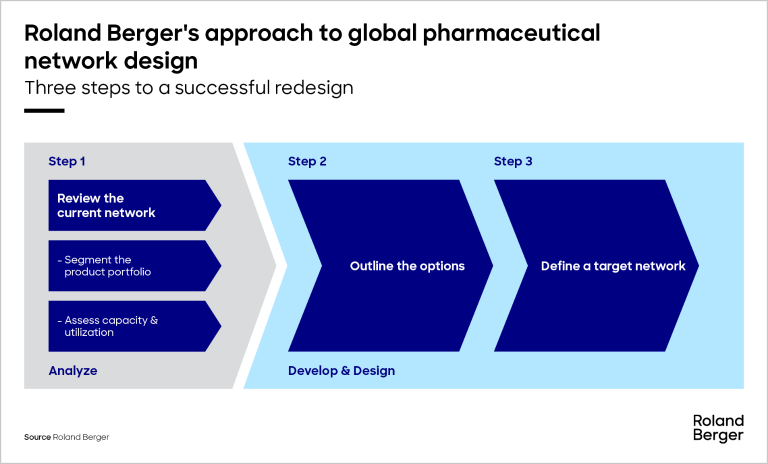Gene therapies (GTx) are a significant breakthrough in the pharmaceutical industry, with the potential to treat genetic disorders by modifying defective genetic material. Luxturna has already restored sight in some patients, highlighting the therapies’ effectiveness. However, these treatments come at a high cost, up to USD 3.5 million per dose for Hemgenix, a hemophilia B infusion.


Designing your global manufacturing network
We help pharmaceutical companies prepare for the challenges of tomorrow
Today's pharmaceutical companies face many challenges when it comes to their global manufacturing networks, from growing geopolitical tension to negative macroeconomic trends. A key task is to ensure security of supply – something that is getting harder and harder in today's uncertain and increasingly pressurized world. We take a close look at the specific challenges facing industry players and the steps that some are taking to reshape their manufacturing footprint.

"We use tools such as the Roland Berger Rapid Plant Assessment to systematically evaluate players' existing manufacturing sites, benchmark them, and separate core sites from weaker ones."
Growing pressure
Pharmaceutical companies are under pressure from all sides. They are facing difficulties on the geopolitical front, such as increasing trade tensions between the United States and China. They must deal with macroeconomic trends such as rampant inflation and fluctuating raw material prices. They must master new, innovative production technologies and more complex supply chains resulting from the needs of cell and gene therapies. And, at the same time, they must respond to the call for sustainability and digitalization in the industry. To secure supplies, some players have already begun the transition from cost-optimized, centralized supply chains to decentralized, more flexible supply chains and more local-for-local production. Those who have not yet taken action must begin the process soon.
Roland Berger's three-step program
To help pharmaceutical companies navigate the challenges, we have developed a systematic approach to global network design. Our three-step program draws not only on our experience with pharmaceutical players but also on our many projects supporting clients across a wide range of industries. Often, our "outside-in" perspective can bring to light things that may have been overlooked in the past, both positive and negative. For pharmaceutical manufacturers, our external view can be particularly helpful when examining their current network design.
Step 1 of the program is to review the company's current manufacturing network: Where is the company and who are its supplier today? Working closely with the client, we focus on assessing existing production sites, supplier networks and internal capabilities. This creates a basis for allocating or reallocating products and production in the new manufacturing network that the company will develop. Step 1 may involve carrying out "rapid plant assessments" (RPAs) using our proprietary tool, mapping capabilities, and reviewing the company's "make or buy" decisions, that is, the desired degree of vertical integration.
Step 2 is to outline the options open to the company, taking into account its legacy situation. For that to be possible, we first need to identify what type of manufacturing sites the company currently has in its network. For pharmaceutical OEMs, we map each of these sites onto one of our four "archetypes": launch sites, core sites, specialty sites and regional sites. With this information in hand, it is now possible to draw up a full set of possible scenarios, from changing nothing (that is, sticking to the status quo) to changing everything (including the company's business models). Using our customizable simulation tool, we also can model the impact of different options and parameters on the overall manufacturing and supply network.
Step 3 involves examining the results of the previous two steps and then carefully developing up a target picture for the company's future global network design. This involves working closely with different members of the organization, not only to create a solution that is effective in practice but to ensure that all the organization is on the same page. We also support companies with the subsequent implementation phase.
How do companies benefit?
Pharmaceutical companies benefit in three key ways from a redesign of their global manufacturing network. First, it increases the resilience of their supply chain – a task that is more pressing than ever today. Second, it improves efficiency in operations, removing pain points and bottlenecks. And third, it ensures that the organization is ready for tomorrow: The redefined manufacturing network creates a firm basis for future growth.
Want to find out more about how Roland Berger can help you design your manufacturing network for the challenges of tomorrow? Download the full article here.
Register now to access the full publication and to learn more about the challenges of tomorrow that pharmaceutical companies have to face.








